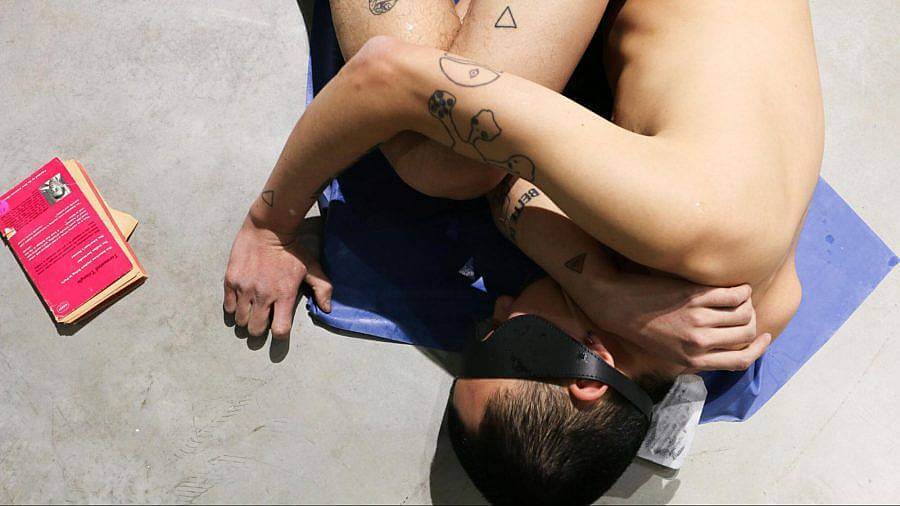Tell us a bit about yourself and what you do. Where did you grow up and what brought you to New York?
I recently started telling people that I position myself as a researcher and photographer who makes objects. I work in art handling and fabrication as well. I moved to New York a little over a year ago to attend the MFA fine arts program at Hunter College.

Before New York I lived in Madison, Wisconsin for six years, where I first came to the states and did my undergraduate. I went to UW-Madison for sociology and art history but ended up graduating with a BFA in sculpture. I decided to go to school there almost solely because the cover for Joni Mitchell’s album Hejira (1976) was shot on lake Mendota, which is right next to campus. When I was growing up in mainland China, my parents played a lot of her discography in our home, and I quickly became obsessed with her musical styles and the way she sings. Therefore in the beginning, my main motivation for learning English was to understand her songs better. I thought it was kind of magical that I got to live next to that lake the first time I moved to an English-speaking country.
Many of your works include spices and various edible items in their materials list. Can you talk about your relationship with these materials?
This also goes back to language. One of the axes I use to structure my practice is the triangulation of sight, site and citation, which is pretty obviously related to my research interest in circulation, but also is rooted in the relationship between language and different ways to access language. For example, the mouth being a site of speech is also the site for consuming sustenance. The absence of speech also precedes different performances of the same site, as in when two mouths are kissing each other. For me the juxtaposition of the sociality of language and the very internal processes of consumption and digestion opens up bodies as porous sites for filtering knowledge. Sometimes I use leftover food and sometimes I use ingredients as they are sold, which I clarify in my material lists. I like using materials, found or made, in different stages within the same work. In my recent installations I showed formula milk in its fluid form and its dried form, silicones in cast form and poured form… I approach materials with very specific ideas but I’m seldomly interested in articulation, so I usually try to expand the understanding of how one material is included instead of explaining it.
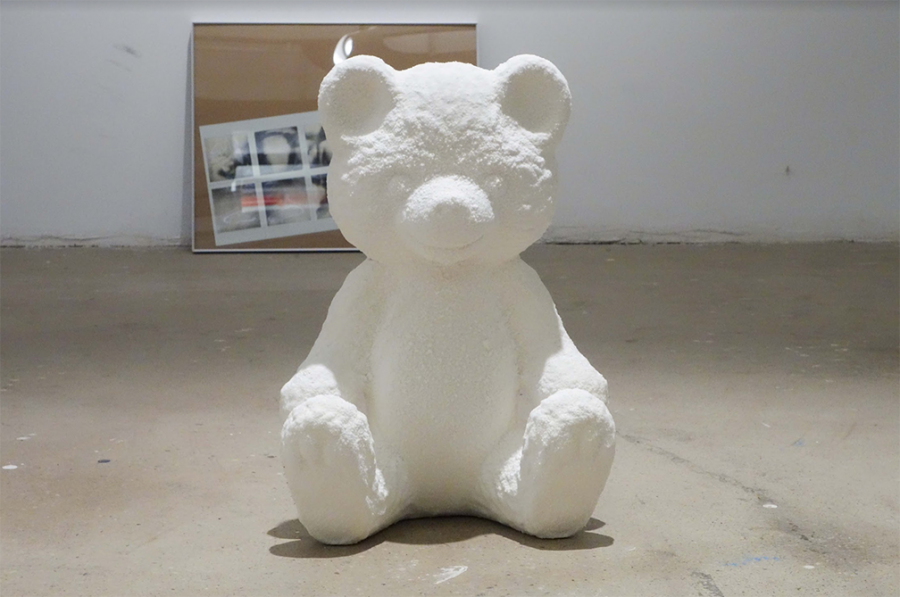
How would you describe your relationship with social media?
I think of the way my projects are planned out as sorting and organizing files of different formats into the same folder that has endless subfolders within it. Social media is helpful for me in that, despite the algorithm having biases for certain information and ways of circulation, the endless discourses around those contents become something else. New directions for research and new ideas often emerge as I’m being distracted from a keyword search. For that reason I love reading comment sections under Youtube videos and instagram posts.
Also, I grew up on the Internet, which really saved my life as I lived in a much more conservative culture as a queer person. I think social media, like dating apps, replace certain social forms of gathering like cruising with the magic of summoning, by which one could immediately access knowledge and communities of people via a simple hashtag. I’m very interested in how online communication shifts the way we think about how knowledge is generated and shared.
Can you talk about your recent show with Project Art Distribution?
My dear friend Alina Yakirevitvh invited me to show with P.A.D, which is a project run by Patrick Mohundro that does one-day pop-up exhibitions on the streets of SoHo with artworks available for sale under $75. I give a lot of my art away to friends and often sell them at the exact cost of production, so it was easy for me to work with the format. I love what Patrick does and I’m very interested in engaging with the public outside of gallery settings. Between the show was announced and it happened the overturning of Roe V. Wade happened so we decided last minute that all the proceeds would go to the National Network of Abortion Funds.
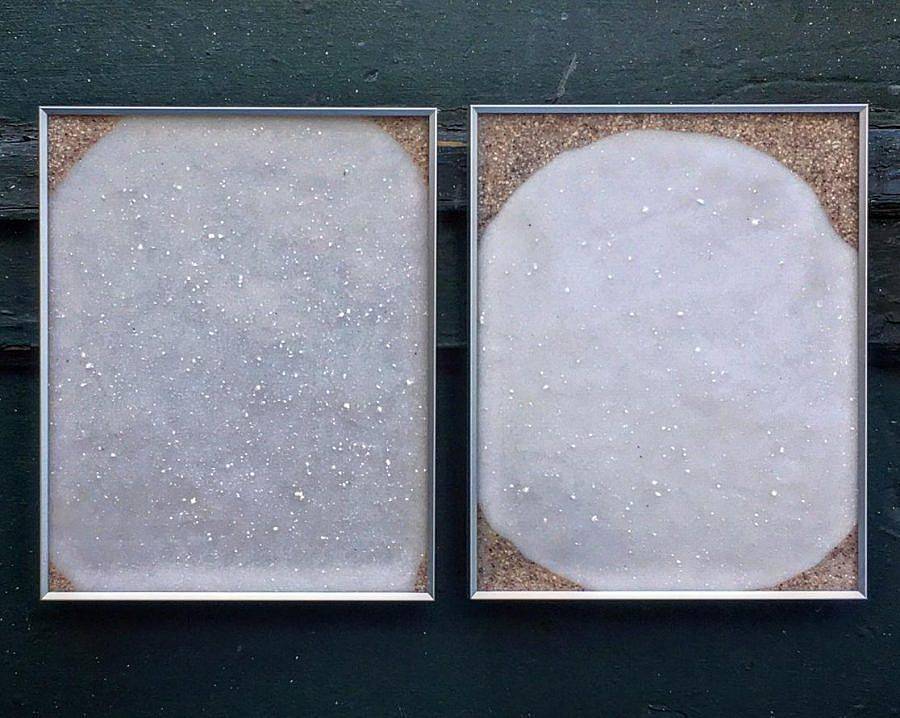
What is your favorite studio snack?
QOO jelly drinks
Can you talk about your interest in the gummy bear/teddy bear form?
I just love bears. I had a huge teddy bear in the house we lived in when I was born so some of my earliest memories include that bear. The thing with stuffed animals is that when they are scaled down they provide comfort by being held, and when they are scaled up they can hold you. A lot of my practice deals with notions of support, holding and withholding, so it was natural for me to turn to something I already enjoy and collect. I have made some bear sculptures where part of their bodies are carved out as niches for holding other objects, whether it be a 60s’ Ken doll from Hong Kong or a bottle of rice wine. I see these sculptures as supply closets, so there’s not a one-to-one dynamic with what I put inside of them. Obviously there is also the play on the word “bearing”, which gestures towards reading into the stance and material components.
I think a lot about the mobility of objects, especially those that were housed in spaces directly built for them. One of the images I always return to is this photograph of a section of the Dragon Gate grotto nearby where I grew up in Northern China. It was taken by the Chinese scholar Edouard Chavannes in the 1900s and published in the catalog Mission Archeologique dans la Chine Septentrionale. You can see that most of the buddhist sculptures are missing from their niches, and the emptiness of those spaces that once held icons for public worship and mediations marks the photograph with their darkness. Everytime I walk through a museum with a collection of stone Buddhist sculptures, often only preserved in fragments, I wonder how their homes look like, and if they still sit on a mountain slope somewhere.
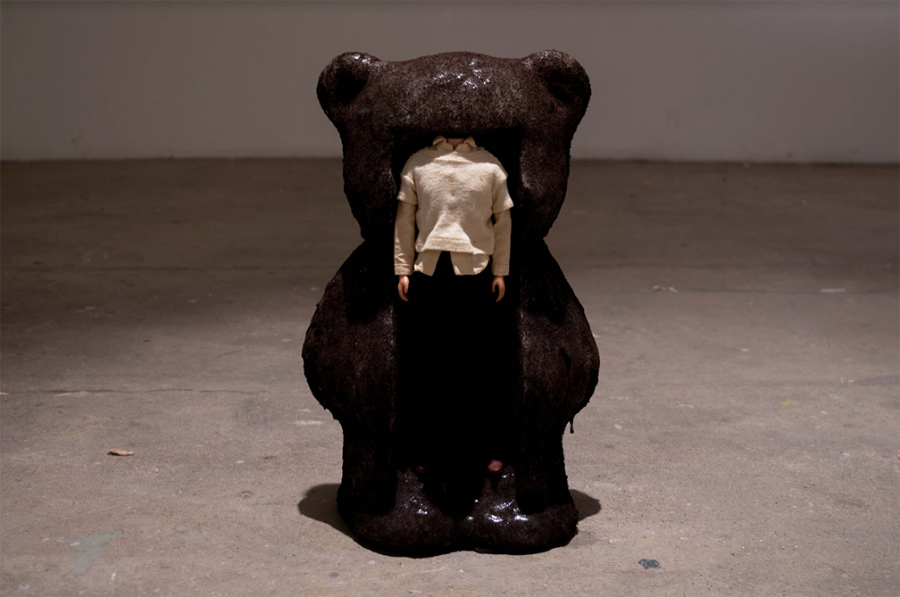
You had made some framed pieces with synthetic urine. Can you talk a bit about your process and material selection?
I am interested in that material because it has the performativity of representation that is central to my love for semiotics. Synthetic urine products resemble human urine but they don’t index any personal metabolism or excretion. They perform the abject on a surface level but lack expressivity. When I started working with artificial urine I was reminded of my previous projects with plaster. I only use plaster and never concrete because I’m drawn to their function as the default material for studies and prototypes but not the actual end result due to its fragility. The bottles of fake urine I use are made for teaching and testing lab machineries, therefore possessing a similar position as rehearsal. I’m also thinking of how prevalent urine samples are required as the biological material that indexes our bodies. Like blood samples, these materials are almost the diametric opposite of what we actually think of when it comes to self-presentation. I guess I’m interested in bodily functions that are categorized as “truthful” and different ways of representing those functions that betray the truth, whatever that means.
The handful of times I’ve used synthetic urine in my work, the material is either mixed with other liquids or allowed to seep through absorbents. I almost try to hide each material I use in the ways I manipulate them so that when people read the material list for the work they would not so easily identify one substance from another. I resort to this kind of “hard-to-read ness” a lot in my practice because I recognize a lot of non-conventional materials I make work with have very legible ways of entry culturally and socially, like rice and powdered milk. The goal is to open up the space between the work and any kind of labeling or writing that identify the materials in the work. That’s where I want the work I do to meet my audience.
How would you describe your relationship with casting?
Casting probably is the one process that I use to center all my material investigations. When you start thinking about a cast ontologically, you realize it is this in-between object that exists among an original, the mold based on the original, and any amount of other replicas cast from the mold. With each cast the result also varies depending on technicalities and material qualities so basically you never get two exact same objects from the same mold, especially as the mold ages in time. The unpredictability and malleability of casting processes fascinate me because it parallels image circulation. For example, a meme could become more and more pixelated as it gets reposted more. I’ve also heard more than one photographer friend telling me that like a developed picture, a cast object also has an essential indexical relationship to its negative. I think a lot about the materiality of negativity and how to reframe it as a kind of presence that is not-yet-here. What an object could mark or remark on what’s absent from itself has always been more interesting to me than its singularity.
As a process deeply involved with absence and negativity, casting also embodies the performativity of speech. The word “casting” is also used to signify finding right fits for roles and causing magical effects. I have been working with a variety of materials for casting, and recently most of them are first transformed into a powder or liquid form then mixed into layers of silicone. It’s important to me that my material choices for a cast have a specific set of rules in their engagement with the form of the object, which I see as my true subject matter(s). The parts don’t have to add up to any self-resolution or conclusion, but it is necessary for my materials, processes and forms to alchemically, and sometimes chemically, respond to each other. Like words, each element involved in casting takes on new meanings that don’t eclipse other possibilities in distinct contexts, which allows for experimentation with material legibility to register information on different planes.
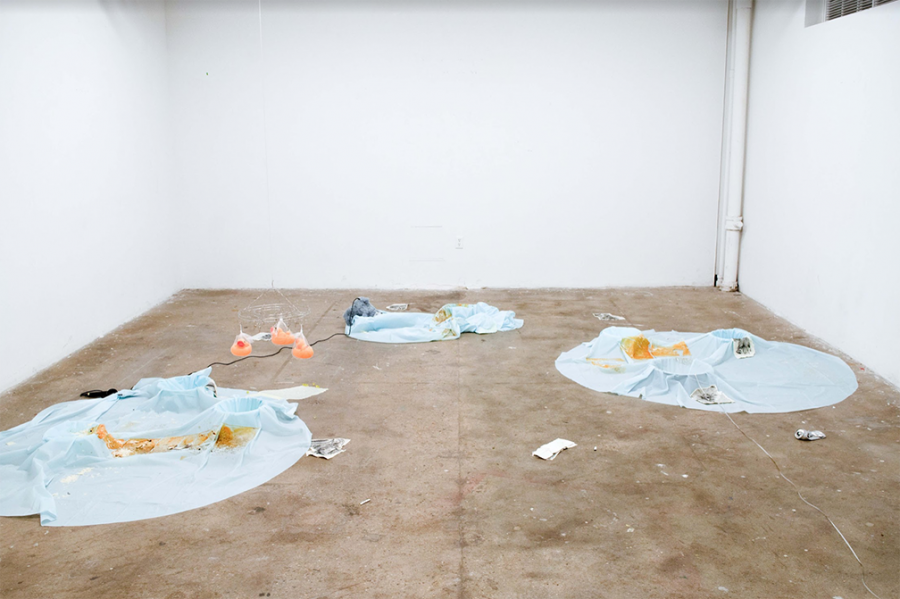
What have you been reading lately?
I am a very deranged reader… I always have three different books with me and normally they don’t have obvious connections to each other. Right now the three are: Suppose a Sentence by Brian Dillon, The Sluts by Dennis Cooper and Jena Osman’s Motion Studies. This summer I have been obsessively reading everything by Herve Guibert that has an English translation, which led me to think a lot about what it means to meet another artist half-way: Guilbert wrote in French and my first language is Mandarin. Then I started revisiting books in my library that touch on translation and being a reader of translated literature, like Moyra Davey’s Index Cards and Kate Brigg’s This Little Art. Because of my Guilbert journey I was also reminded of how I never read anything Garth Greenwell published, despite having an interest in explicit depiction of sex in literary forms, so I read What Belongs to You and Cleanness. Going back to the half-way-ness, the best thing I’ve read this year is still Jessica Au’s Cold Enough for Snow, in which the protagonist travels to Japan with her first-generation Chinese immigrant mother where neither of them speak the Japanese language.
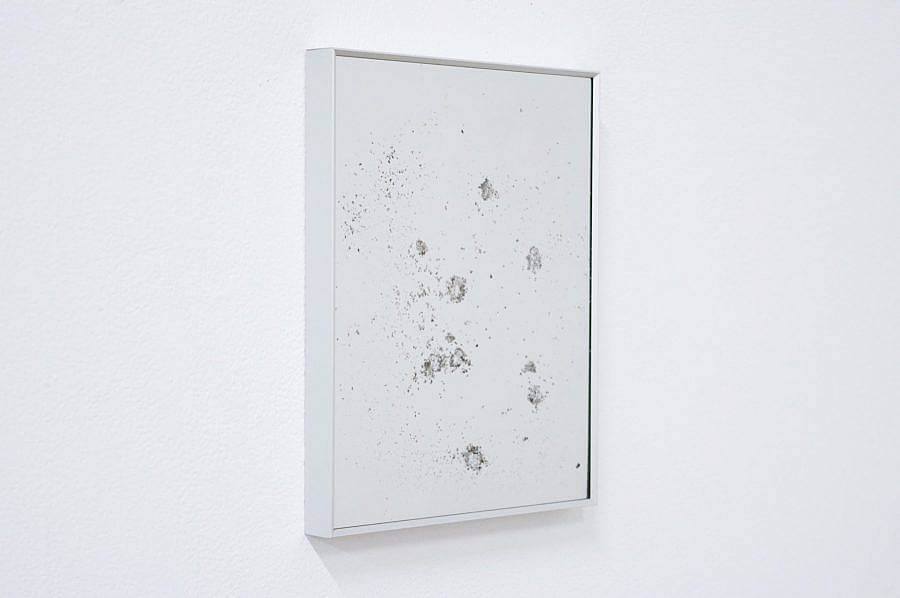
The aluminum frame is very present throughout your body of work. Can you talk a bit about the action of framing and the way the frames facilitate the work?
Most of the framing devices in my work have a very different texture or touch than what they are holding, which is a way for me to tie the questions raised by individual processes and materials to systems of larger scale. The aluminum frames were chosen because they have an omnipresent self-authorizing quality. I was thinking of the aluminum frames in subways, schools and hospitals, where, simultaneously, the information presented registers as more convincing and less expressive. I pair a lot of my silicone pieces with aluminum because together they could easily evoke two different kinds of touch, and when the silicone is dyed in an unusual color, the harshness of the aluminum could potentially contaminate how the silicone surface would be perceived. In any case, the pairing of the two materials heightens their plasticity and evades showing traces of myself as the maker.
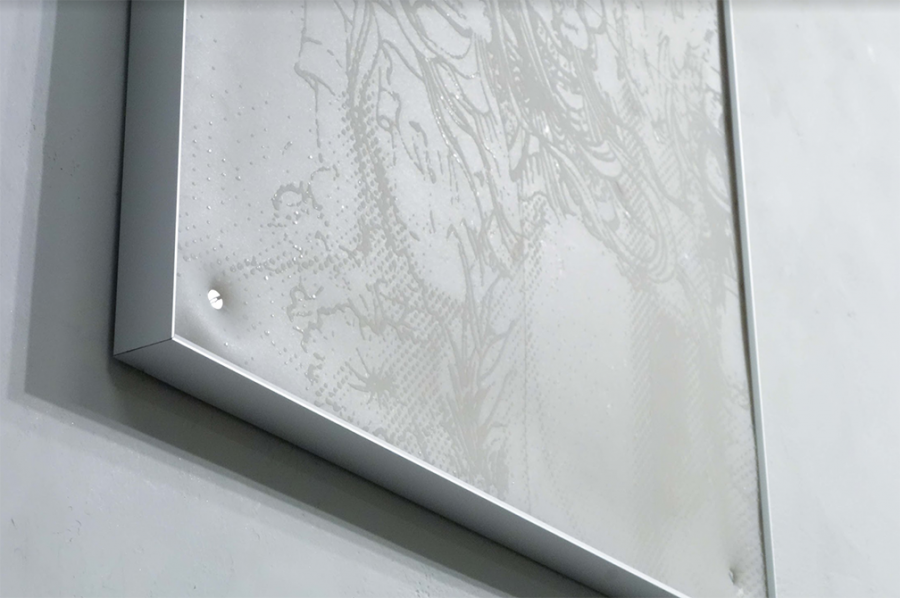
Many of your works have a very low-relief sculptural element to them. How do you consider the surface of the work in relation to the picture plane when making these?
The works you are referring to are these silicone pieces with low reliefs of collaged half-tone images on the surface, and they are often dyed with or encase within them edible materials and food remnants. Because of how low their relief is, the images on these panels only become visible when viewed at angles. As a result, when you walk up to them straight on in a space, they look like an abstract image. I started using this method because I wanted to make pictures that are so confident in their objecthood that their “fronts” are slightly displaced. I was thinking about the words “recto” and “verso” and how they signify both right/left and front/back.
My need to highlight the reliefs objectness while maintaining them in a rather flat format has to do with the origins of the collages. I collect images and prints of exported and displaced Chinese artifacts since the Opium Wars produced by European and American museums. I’m interested in institutional representations of dislocated, misplaced and contextless objects that are deemed as educational. It’s crucial to me that in appropriating such images, their material artificiality is heightened. I need my work to be self-aware of its relationship to the ways we look at and read into an image.
Who has been inspiring you lately?
My boyfriend Adam, who has been inspiring me to rethink how my life is reflected in my work, despite the fact that I rarely use my personal life as direct source material. I wonder about the possibilities of approaching themes like affection and melancholy without being overly sentimental.
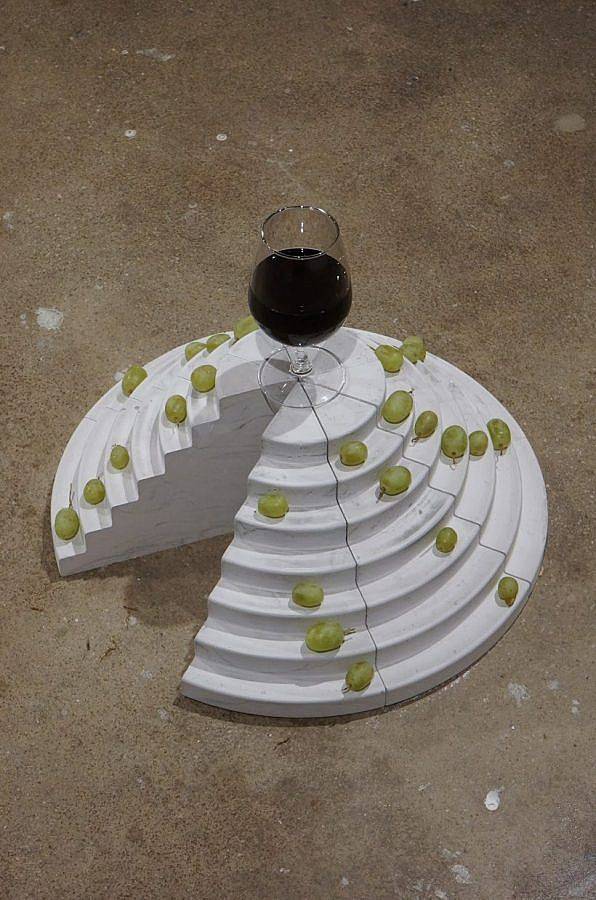
Seeing as you retired your instagram handle; @chinesekatemoss for @helmet_lung would you say that fashion is a big influence on you and your work?
I have a tattoo of one line from Jenny Holzer’s perfume campaign for Helmut Lang: “I SMELL YOU ON MY SKIN”, so my obsession with Lang’s work is pretty self-explanatory.
There are other fashion designers I’ve idolized growing up, like Elsa Schiaparelli, Miguel Adrover, Olivier Theyskens, A.F. Vandevorst and most importantly Chalayan. I’ve learned from their work that materials could alchemize very specific references into very specific forms, and that I find myself intuitively gravitating towards things that are highly stylized and formalistic but show a restrained degree of excess. There’s a lot of overlap in terms of how they pair materials and colors between artists and designers I look up to: Helmut Lang Spring 1999 always reminds me of Rebecca Horn’s peacock sculpture; grommeted leather pieces from AFV’s Fall 2000 collection resembles Tom Burr’s blankets on plywood; Chalayan Fall 2000 where he made dresses that collapse into furnitures was evocative of Lygia Pape…
Another aspect of fashion that I’m invested in is how things are presented, whether through publication, images or films. Despite him not being a designer, Olivier Assayas’ films often push me to think about dressing and undressing. The glossiness of his work, a kind of concentrated sublimation of the materiality of the actual people and objects into the materiality of projected images on screen, asks a lot of questions around the embodiment of something versus the thing-ness of it. Similarly, Norbert Schoerner’s Prada campaigns from the late 90s are formative for my thinking as those images almost position the models as land and what’s on their bodies as landscape, while being totally aware of how they would be cropped as they become two-page spreads in a magazine. I admire and respect people who make fashion and fashion images precisely because of their attention to translating between one mode of presentation and another, between ideas and desires.
Interview conducted by Sam Dybeck.
Edited by Milo Christie and Sam Dybeck.
